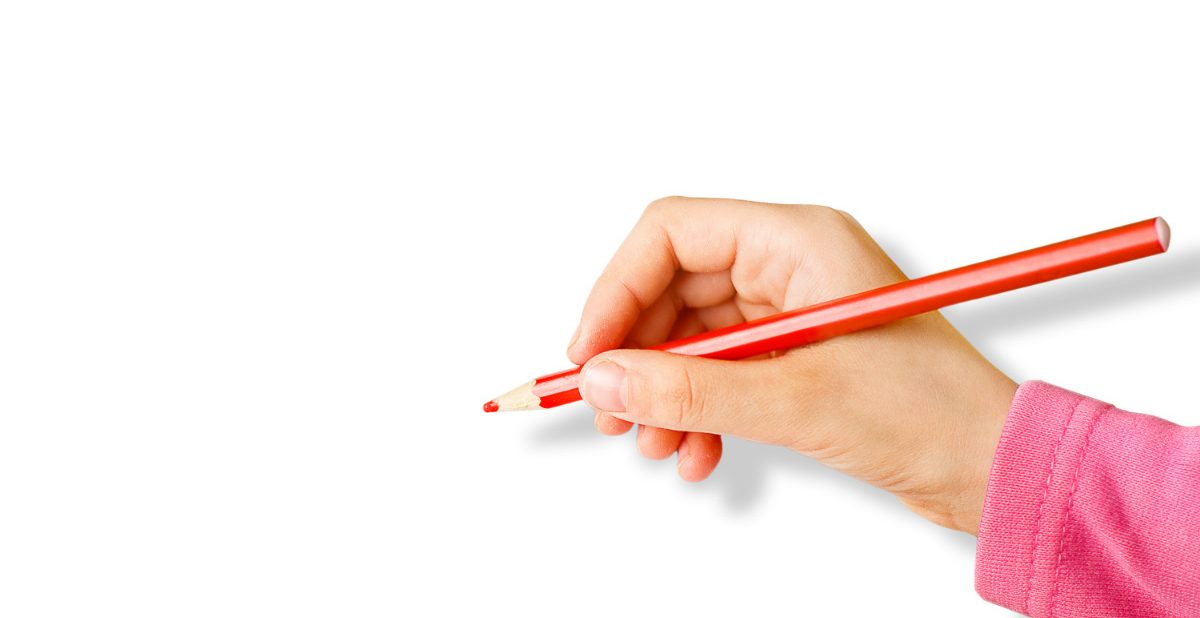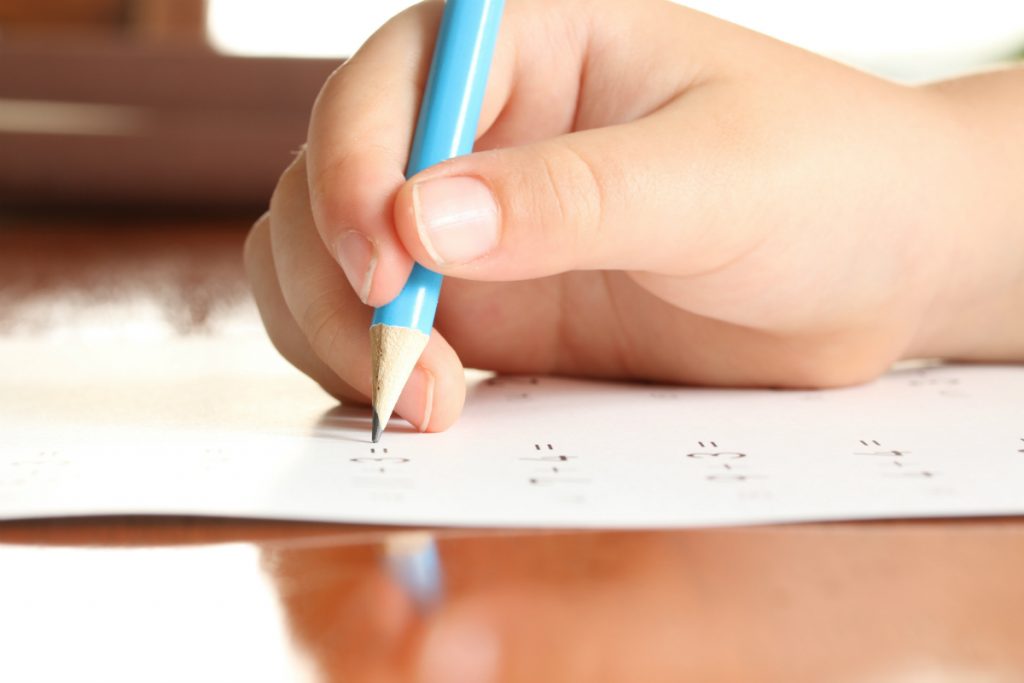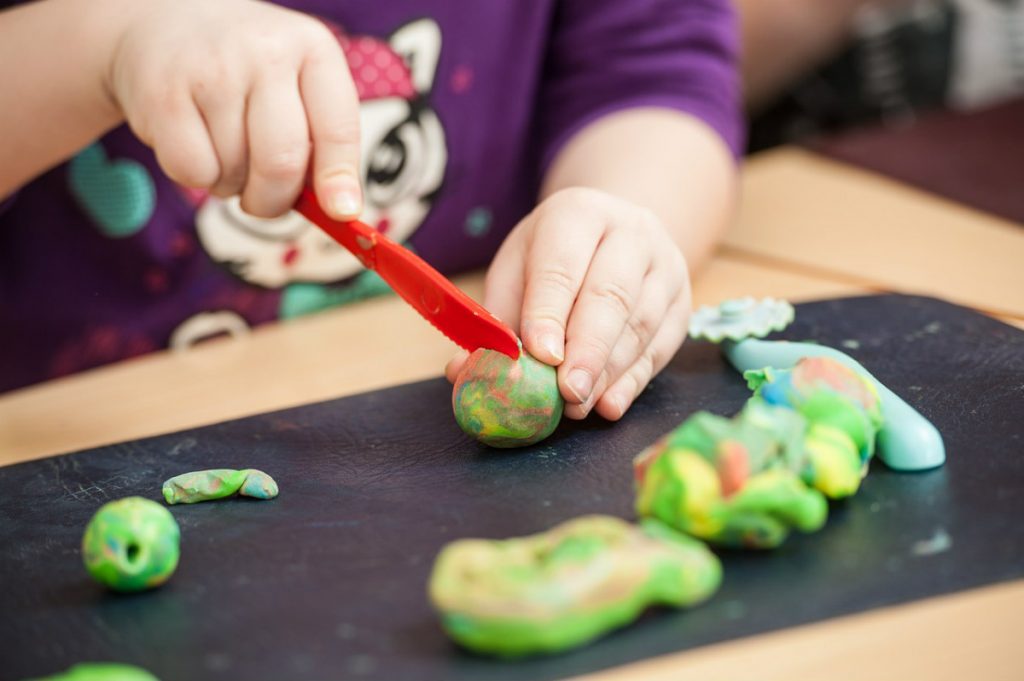
Tips from an OT: developing your child’s pencil grip
By Lisa Hughes, OT
As occupational therapists, we are often approached by teachers and parents with concerns about their child’s awkward pencil grasp. Left unaddressed, pencil grip problems can end up affecting a child’s academic performance at school. When children can see they’re not keeping up, it can lead to anxiety, frustration and low self- esteem, leading them to fall even further behind.
It’s important to remember that pencil grip acquisition is developmental and in this article, we are addressing pencil grips for 5-6 year old children.
The most efficient way to hold a pencil is the dynamic tripod grasp (similar to that in the image below) where the pencil is positioned between the thumb and index finger with the pencil resting on the middle finger. Another option is the quadrupod grasp, where the pencil is positioned between the thumb, index and middle fingers, the fourth finger stabilises the pencil and the fifth finger is curled in towards the palm.

Being able to hold a pencil correctly requires a child to have a range of foundation skills in place, so if your child isn’t using one of these pencil grips yet, the following fine motor activities can help them develop the skills they need to hold their pencil functionally, and write more easily.
Fine Motor Strength
Kids need strong hands and fingers for a whole range of day-to-day activities for school and play. Having strong wrists, hands and fingers helps children hold their pencil functionally, as well as helping them write with endurance and fluency.
Some great exercises to help build your child’s fine motor strength include:
Gross motor activities: Wheelbarrow walking, climbing over obstacles, animal walks.
Paper crumpling: Have your child crumple up sheets of newspaper or scrap paper into the smallest, tightest ball possible. Increase the challenge by only letting them use one hand to crumple the paper. Once you have small crumpled balls, try to flick them at a target.
Tape races: Get your child to tear off lots of pieces of masking tape and place them down on a flat surface (e.g. a table or the floor). Then have a race to see how many they can peel off in one minute! You could also use the strips of tape to make artwork.
Play-Doh and Theraputty exercises:
- Make a spider or octopus by having your child first roll the putty into a ball, flatten it down, and then pinch out eight legs using their pincer fingers (thumb and index finger).
- Make spaghetti by having them pull off small pieces of Play-Doh and roll them into long ‘noodles’.

Pegs: Pinching and squeezing clips, pegs, tweezers, or even tongs helps build hand muscle strength.
- Have your child use pegs to pick up pom poms and move them into a bucket or sort them into groups by colour or size. Have a race to see who can do it the quickest!
Separation of the two sides of the hand
Did you know our hands can be separated into two sides? The precision side (thumb, index finger, and middle finger) and the power side of your hand (fourth and fifth fingers). Being able to use the two sides separately is important for moving and using objects like pencils, cutlery and scissors.
We are best able to control the ‘precision’ side when our ‘power’ side is stable (curled up into our palm or extended away from the other fingers). In handwriting, this allows for fluency and control, which ultimately promotes neat handwriting.
A great exercise to assist your child with this is encouraging them to hold something (like a piece of LEGO, ball of Play-Doh or cotton wool, an eraser, button or coin) with their fourth and fifth fingers, while using their precision side by doing one of the following:
- Flipping coins
- Playing Connect Four or Battleship
- Creating shapes or pictures using pipe cleaners or wikki sticks
- Rolling Play-Doh into small balls
- Squeezing a spray bottle with the pointer and middle fingers
- Placing coins into a piggy bank
- Colouring, writing or cutting
Open thumb web space
The thumb web space is between your thumb and index finger (it makes an “O” when you make the “OK” sign). An open thumb web space is necessary for tasks requiring in-hand manipulation, such as moving coins from the palm to the fingertips or picking up a pencil. If the thumb is squashed up against the index finger, it makes it hard to move items. Writing with a closed web space often causes poor and slow handwriting, especially as kids are expected to write at faster speeds the older they get.
Activities: These activities can help open your child’s thumb web space:
- Roll Play-Doh into small balls using the pads of the thumb and index finger.
- Pop bubble wrap (this can be fun to join in too!).
- Thread plastic beads onto a string, place cereal Os onto toothpicks, or stringing straws onto yarn.
- Play games like checkers where children have to grasp small disc-like pieces with a pincer grasp between their thumb and the pad of their index finger.
- Flicking a marble at a target.
In-hand manipulation
In-hand manipulation is the ability to move small objects around in your hand without using the other hand to help. This is, perhaps, the most complex fine motor skill as it involves three components:
1. Translation: Using your fingers to move or ‘squirrel’ a small item from your palm to your fingertips (e.g. when you hold a coin in your palm and move it to your fingertips to push it into a piggy bank or vending machine).
2. Shift: Moving an object using the pads of your fingers (e.g. adjusting your pencil grip, or manipulating a button or a zipper with the fingertips).
3. Rotation: Rolling an object using your fingertips (e.g. rolling a pencil in your fingertips, turning a pencil over to use the rubber, or opening a bottle top by rotating the lid between your fingertips).
If your child has difficulty with in-hand manipulation, they may use both hands for activities that would usually only require one or they may need to unnecessarily stabilise an object against their body to get the job done.
You can try these activities to improve your child’s in-hand manipulation, which will ultimately encourage use of a functional pencil grasp:
Pencil games
- Hold the pencil in the fingertips, ready for writing, then “walk” the fingers to the eraser end of the pencil, then back to the tip.
- Turn the pencil between the thumb and fingertips: try turning it like a windmill in one direction, then the other.
- Practice flipping the pencil from eraser end to tip end.
Extra help
It’s important to try to improve a child’s pencil grasp earlier, rather than later because the older they get, the harder it will be to break their poor habits! Our advice is to have a break from the iPad and screens and to play with as many toys/utensils as they can get their hands on… Let them explore (with some guidance in the four areas above) and they will ultimately help themselves to produce controlled, legible handwriting!
Lisa Hughes is the founding director and Senior Occupational Therapist at Occupational Therapy Helping Children, which is based in Sydney’s Northern suburbs. The practice supports a wide range of children with disabilities, through individual treatment sessions, group programmes, screenings and running information sessions for parents and teachers. For more information visit www.occupationaltherapy.com.au








